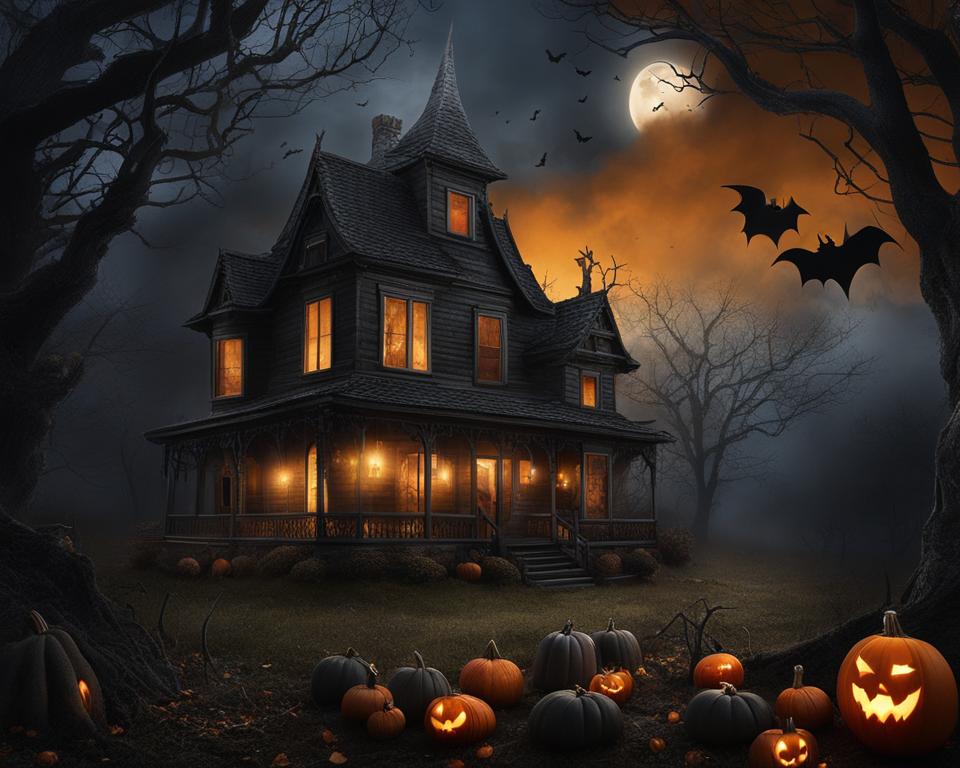Halloween is an annual holiday celebrated on October 31st. This popular event features fun costumes, tasty treats, and spooky decorations. But how did this strange celebration originate? Understanding Halloween’s complex history shows why the holiday still captivates people today.
Ancient Origins of Halloween
Halloween traces back over 2,000 years to pre-Christian times across Ireland, the United Kingdom, and northern France. Ancient pagan groups known as the Celts celebrated the end of the harvest season with a festival called Samhain (pronounced sow-in) on November 1st.
Date Marked Their New Year
The Celts viewed Samhain as the start of their new year and the transition into winter. They associated changing seasons with the supernatural and life’s mysteries.
Seen as Spiritually Significant
The Celts regarded Samhain as a liminal time when the veil lifted between this world and the spirit realm. Living souls mixed with ghosts during Samhain.
Link to the Underworld
The Celts believed dead kinsmen could briefly return as ghosts on Samhain Eve with gifts or curses for their families. Evil spirits might also cross over seeking bodies to possess.
Used Rituals for Protection
To protect themselves, Celtic villagers practised divination, offered harvest sacrifices, wore disguises, lit bonfires, and set out food to placate ghosts.
This brief table summarizes key origins:
| Date | Ancient Group | Festival Name | Ritual Practices |
|---|---|---|---|
| October 31-November 1 | Celts | Samhain | Costumes, divination, sacrifices, bonfires, offerings to spirits |
Evolution into Modern Halloween

When Christianity spread into Celtic lands, missionaries pragmatically incorporated existing pagan rites into church holy days to ease conversion. Samhain gradually blended into a new related Catholic celebration.
All Hallows’ Eve
In the 8th century, Pope Gregory III designated November 1st as All Saints’ Day or “All Hallows” Day to honour Christian martyrs and saints. The night before became All Hallows’ Eve.
Maintained Supernatural Associations
Though repackaged as a Catholic occasion, Samhain’s spectral lore endured on All Hallows’ Eve, maintaining associations with darkness, mischievous spirits, and prophecy magic, as well as honouring the dearly departed.
Brought by Immigrants to America
In the mid-19th century, nearly 2 million Irish fleeing the potato famine brought All Hallows’ Eve traditions to America, like costumes, pranks and fortune telling. Celebrations grew more popular over time.
Evolved into Modern Halloween
By the early 20th century the distinctly American version emerged into contemporary Halloween featuring secular, child-centred practices like trick-or-treating, pumpkin carving, and costume parties rather than religion. Commercialization further expanded its scale and popularity.
This table summarizes the transition:
| Era | Group Celebrating | Name | Main Features |
|---|---|---|---|
| 8th Century | Catholics | All Hallows’ Eve | Honored saints and martyrs |
| 19th Century Irish immigrants | American Catholics | Blend of folk traditions | Costumes, pranks, supernatural themes |
| Late 20th Century | Mainstream America | Modern Halloween | Secular, commercial, kid-focused, candy |
Why Halloween Continues Today
Beyond its deep history, Halloween endures because the holiday serves important roles in society that appeal to human nature.
Provide Safe Thrills
Haunted attractions, horror films, spooky decorations, and chilling legends allow adrenaline rushes and controlled frights. Halloween offers immersive creepy fantasy.
Unleash Imagination
Costume parties, creative designs, and boundless candy selections let people push boundaries. On Halloween individuals safely explore innovative personas, appearances, and experiences, unlike daily life.
Foster Community Bonds
Friendly competitions like pumpkin carvings as well as coordinating group costumes or haunted house trips build connections. Trick-or-treating, parties, and school events provide social glue.
Ease Fears of Death
Laughing at the macabre through figurines, skulls, vampire teeth, or zombie makeovers helps folks cope with real loss and mortality’s inevitability. Halloween silliness offsets unease about dying.
Halloween Traditions Through the Years
Halloween activities preserve both ancient pagan practices and modern customs representing this holiday’s rich cultural blending over centuries.
Ancient Traditions Honoring the Dead
Early rituals like burning bonfires, preparing soul cakes, and leaving food out for visiting spirits persist today through regional folk traditions. These keep old superstitions alive.
Creative Costuming
Disguising oneself and adopting fantastical appearances remains central to Halloween, though costume trends shift with the times from bats, witches and devils to pop culture icons like game characters or celebrities. Costume parties and contests invite dramatic performances.
Generational Crafts
Carving jack-o’-lanterns out of vegetables and gourds maintains Celtic ties to harvest time and frightens away spirits. While bobbing for apples also continues seasonal orchard traditions. Ghost stories are told around fires or candles to set the mood to persevere as well.
Secular Revelry
Over the decades, mainstream Halloween developed secular child-centred observances like trick-or-treating for candy, pumpkin carving contests, themed dance parties, haunted houses, spooky yard haunts, telling jokes about skeletons, and watching horror movie marathons. These move the holiday from sacred to simply fun.
Conclusion
For over two millennia, cultures have set aside an autumn day to confront death’s dark mysteries. By weaving ancient Celtic ritual lore together with modern secular entertainment, Halloween now marks a beloved occasion unleashing playful frights and fantasies, stoking community spirit, and taming people’s deepest fears through laughter. This strange, syncretic holiday reminds all that the veil between worlds stays thinnest on October 31st.